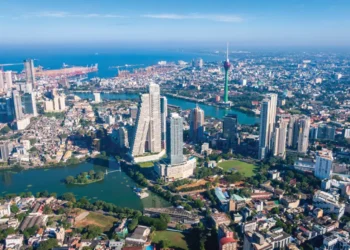Former Victorian gaming regulator Peter Cohen discusses the effectiveness of three key methodologies commonly used in the development of new IRs.
There are various methods jurisdictions can use to assess proposals for new IR developments. However, the most critical step in the process is not the evaluation itself, but the assessment model put in place at the outset.
Before establishing assessment criteria for design, technical capability, financial capacity, social safeguards and all the other categories relevant to any judgment, there is an earlier decision to be made. Should the evaluation process assess inputs, outputs or outcomes?
What’s the difference? Inputs measure quantity, but rarely quality. The most common input we see is the amount of money to be spent. For example, spending US$500 million dollars of government money to build a new hospital sounds 20% better than spending US$400 million. But measuring inputs only tells us how much is going to be spent and not whether it will be spent wisely. It is quite conceivable that spending US$400 million wisely will build a better hospital than a profligate US$500 million project.
Output measurements indicate what volume of something is to be produced. They don’t necessarily advise of the usefulness of that product. Continuing with the hospital example, an output might be the quantity of new hospital rooms built or the number of treatments to be funded from that US$500 million input. At least this measure provides some ability to see what has been produced in return for investment of that money. Once again, though, it doesn’t explain whether such outputs will be useful or not.
The best methodology is to identify outcomes. From the above example, a desirable outcome would be a measure of the improved health of the local community. It is true that outcomes can sometimes be hard to quantify, and for that reason they’re often not used.
It is also true that for political and PR reasons it is often a lot easier to convince a community that the government is acting in the community’s interests by using input measures as an indicator of such action. After all, it is much easier to convince voters that spending US$500 million on a capital project is somehow better than US$400 million.

IR ASSESSMENT MODELS
The decision on whether to use inputs, outputs or outcomes should be no different for governments making determinations about IRs.
An example of an input model being used for IRs can be found in Vietnam which requires a US$2 billion commitment as a threshold amount to enable a casino licence to be issued. If the promised amount is not delivered, the licence will either not be issued or, if it has been provisionally granted, can be unilaterally withdrawn. Under the path it has chosen, Vietnam will get its IRs, but that does not mean these IRs will deliver the best possible outcomes for their communities.
A better way forward was seen in Australia when Victoria issued its first and only casino licence in the early 1990s. Victoria required bidders for the Melbourne casino licence to propose projects incorporating gaming and non-gaming offers to whatever standard they wished. Cost was irrelevant other than the capacity of the bidders to pay for what they proposed.
The assessment criteria were based on the expected outcome of the proposal (range of gaming and non-gaming offers, quality of build, design, suitability for its location, fulfilling local needs and more). This approach was enhanced by the decision not to constrain bidders by imposing requirements to deliver specific activities, such as MICE facilities or a particular standard or volume of accommodation. The mix of activities in the IR was entirely at the discretion of the bidders with market competition driving the outcome.
The winning bidder was subsequently required to enter into agreements with the State Government obligating the bidder to deliver on its commitments. During construction, an independent representative appointed by the state (an architect in this case, but it could have been a builder with major commercial development experience) protected the state’s interest by monitoring progress.
The purpose was to ensure that the standards, timelines and milestones promised in the agreements were met. In this way, Victoria achieved the outcome it desired from the outset – a world class, international standard IR with multiple non-gaming offers such as conference and banquet facilities, hotel accommodation pitched at three different markets, nightclubs, cinemas, and food and beverage outlets ranging from fine dining to food courts.
The success of Victoria’s IR development was defined by the outcome rather than any specified inputs or outputs. Certainly, the successful bidder spent significantly in building its IR complex, but it was its choice to do so by promising to deliver an outcome which met the expectations of Victoria.
 JAPANESE ASSESSMENT
JAPANESE ASSESSMENT
There are lessons here for jurisdictions still contemplating the best way forward, such as Japan, who are now embarking upon an IR implementation process of their own. Some potential bidders have committed publicly to spending upwards of US$10 billion in developing an IR in Japan. Similarly, some Prefectures, perhaps ostensibly to swing public or political support their way, have indicated their support for this level of financial commitment.
However, such promises should be seen to be input measures of limited usefulness for any long-term, practical or sustainable assessment. Does a US$10 billion outlay indicate anything about the impacts on visitation, the quality of the construction, the utility or suitability of any of the proposed non-gaming offers or the number of jobs to be created by the development? The answer is no!
Nevertheless, on paper Japan is heading in the right direction. Its draft Basic Policy for the Development of Integrated Resorts is an excellent example of an outcomes driven policy. It identifies desired outcomes throughout. For example, in Section C of the proposed Evaluation Criteria, it states, “IR operators are expected to establish sufficient agreement in the region regarding the development of IR areas, and to build and maintain good relationships in areas that are essential for the long-term and stable continuation of the IR business.”
This goal is not unique to Japan. It has been pursued in many jurisdictions, from Melbourne to Macau. For example, Galaxy Entertainment Group’s (GEG) casinos in Macau have developed programs for local small and medium enterprises. The bustling laneway of independent restaurants and food outlets situated outside GEG’s Broadway property shows how local small businesses have benefitted from the addition of an IR within their community.
What is now important for Japan and the Prefectures who will be embarking upon formal Requests for Proposals is that the assessment process must closely follow the direction given in the Basic Policy. It should evaluate each proposal on the outcomes they offer in showcasing Japan to the world and in so doing, strengthening Japan’s economy. This can be through an enhanced MICE industry, supporting local small and medium sized businesses to be suppliers to the IR, generating significant numbers of high quality new jobs (while also seeking confirmation that the operator will offer pathways for longer-term career prospects, particularly for locals), and attracting large numbers of tourists to visit the IR and the country as a whole. In so doing, anticipated tax revenues and economic impact assessments can be made and measured.
Finally, and no less important, they should consider commitments toward, as well as previous experience in, providing training to employees in all aspects of IR operation, including harm minimization.

With COVID-19 having so substantially impacted international travel, there is also an opportunity for IR bidders to incorporate programs in their proposals which maximize Japan’s envied reputation as a safe environment in a country known for its commitment to health and wellness as well as its relative success in combatting the pandemic.
Proposed social safeguards can also be assessed from an outcomes perspective. A bidder should be able to explain the systems and controls it will put in place – such as, but not necessarily restricted to, self-exclusion, employee training, cutting edge technological tools and support for counselling – to minimize harm from gambling. Bidders should be expected to show from their own experience the outcomes of these approaches in jurisdictions where they already operate. This will give confidence as to what outcomes might subsequently be reasonable to expect in Japan.
Putting in place an outcomes-based framework allows a jurisdiction to build binding commitments into agreements with the IR licensee for maintenance of physical and operational standards. Without such agreements, the non-gaming components of a facility could fall into disrepair quite quickly with an operator concentrating its capital expenditure on the higher earning gaming offer. The draft Basic Policy is clear that a completed initial build is not in itself enough with the licensee required to re-invest some of its operating profits after opening into continuous improvements of its IR facilities.
This also hints at an expectation that a bidder is more likely to be successful if it is sufficiently financially sound that repatriation of profits to service debt will not detract from the ongoing standard of the Japan IR.

DEFINING SUCCESS
IR success may have many definitions. Outcomes which benefit the community as a whole are, perhaps, the best definition. As can be seen in Macau, the local community has been a major beneficiary of the opening up of the former colony to the new IRs. As an example, GEG has developed a collection of IR properties which have produced outcomes that beat expectations. They are built and operated to a high-quality standard, with continuous improvement ensuring they meet or exceed their international peers.
They provide a mix of non-gaming offers which make them truly family friendly, and they have developed programs to provide opportunities for local small and medium enterprises. In addition to the physical build, GEG leads Macau in the implementation of social safeguards such as harm minimization activities.
GEG has in no small way contributed to the modernization of Macau from a jurisdiction dominated by gaming to one which provides family friendly leisure in a safe and modern environment and one that allows the whole Macau community to share in its success.

































